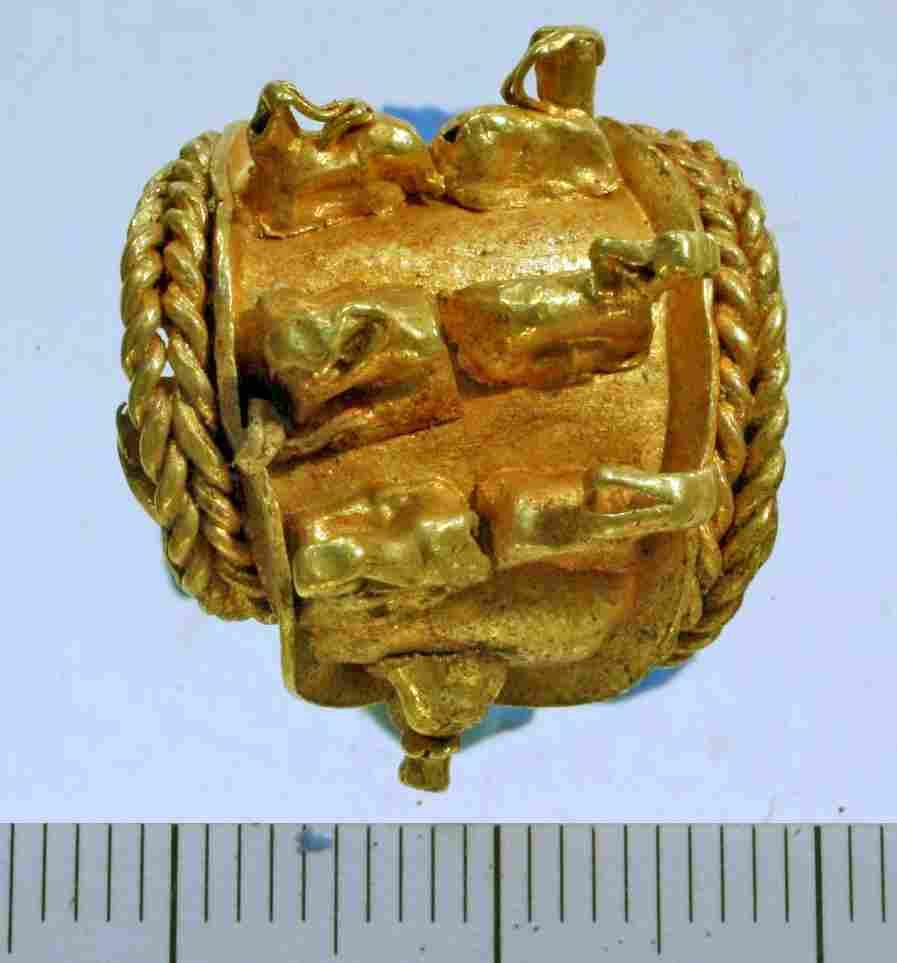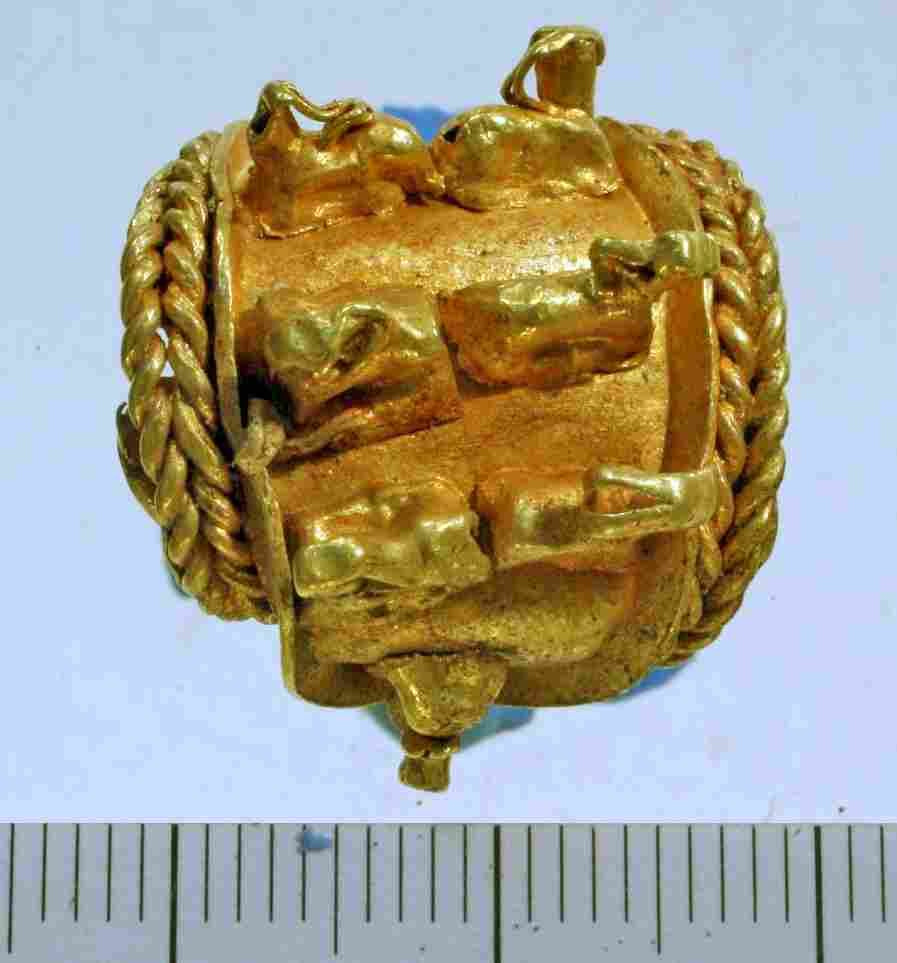Gold and silver jewelry cached inside a ceramic jug excavated at Tel Megiddo in Israel may have been left there during the Egyptian withdrawal or by people influenced by the Egyptians.
Of particular interest is a gold earring featuring three-dimensional molded ibexes (wild goats), which the researchers describe in a press release as being “without parallel.”
Tel Megiddo is a multilayered excavation site in the Jezreel Valley in northern Israel. It was an important center in Canaanite culture until around 1000 B.C. and then in Israelite culture for the following two centuries. Multiple strata covering this time period have been carbon dated at the site.
“Such a sequence of radiocarbon dates doesn’t exist anywhere else in the region,” said excavation co-director Israel Finkelstein at Tel Aviv University (TAU) in the release.
The jewelry was discovered in a layer dated to around 1100 B.C., which was not long after the Egyptian empire collapsed during the 12th century B.C.
Wrapped inside textiles, the stockpile includes other items, such as a ring, lunette or moon-shaped earrings, and carnelian beads.
Some of the designs and materials, such as carnelian, were used in Egyptian jewelry from the same period, suggesting a possible Egyptian origin or influence. Megiddo was connected with Egypt during the Bronze and Iron ages.
“For unique items, we work to find parallels to help place the items in their correct cultural and chronological settings, but in this case we still haven’t found anything,” the researchers said in the release.
The team thinks that the jewelry belonged to a Canaanite woman who resided at the house during an era called “Iron I.”
“It’s clear that people tried to hide the collection, and for some reason they were unable to come back to pick it up,” Finkelstein said, adding that the owners could have perished or been forced to flee.
Further analysis of the collection and also the textiles will reveal more information about their origin. Back then, Egypt was rich in gold but lacked silver, meaning that any pure gold pieces would probably have been crafted by Egyptians.
The Epoch Times publishes in 35 countries and in 19 languages. Subscribe to our e-newsletter.





